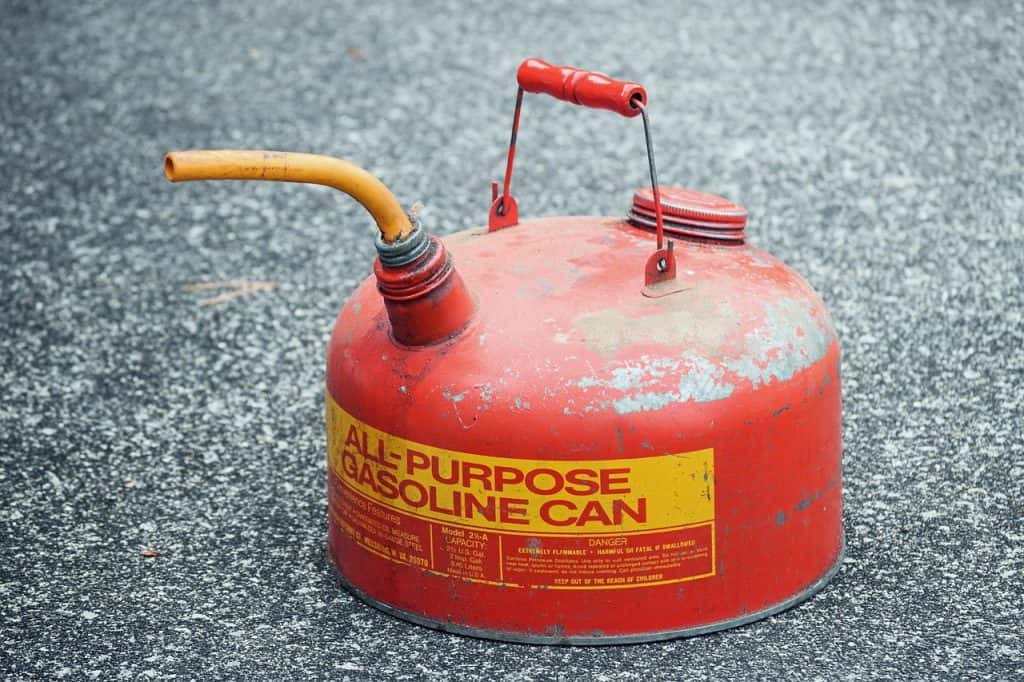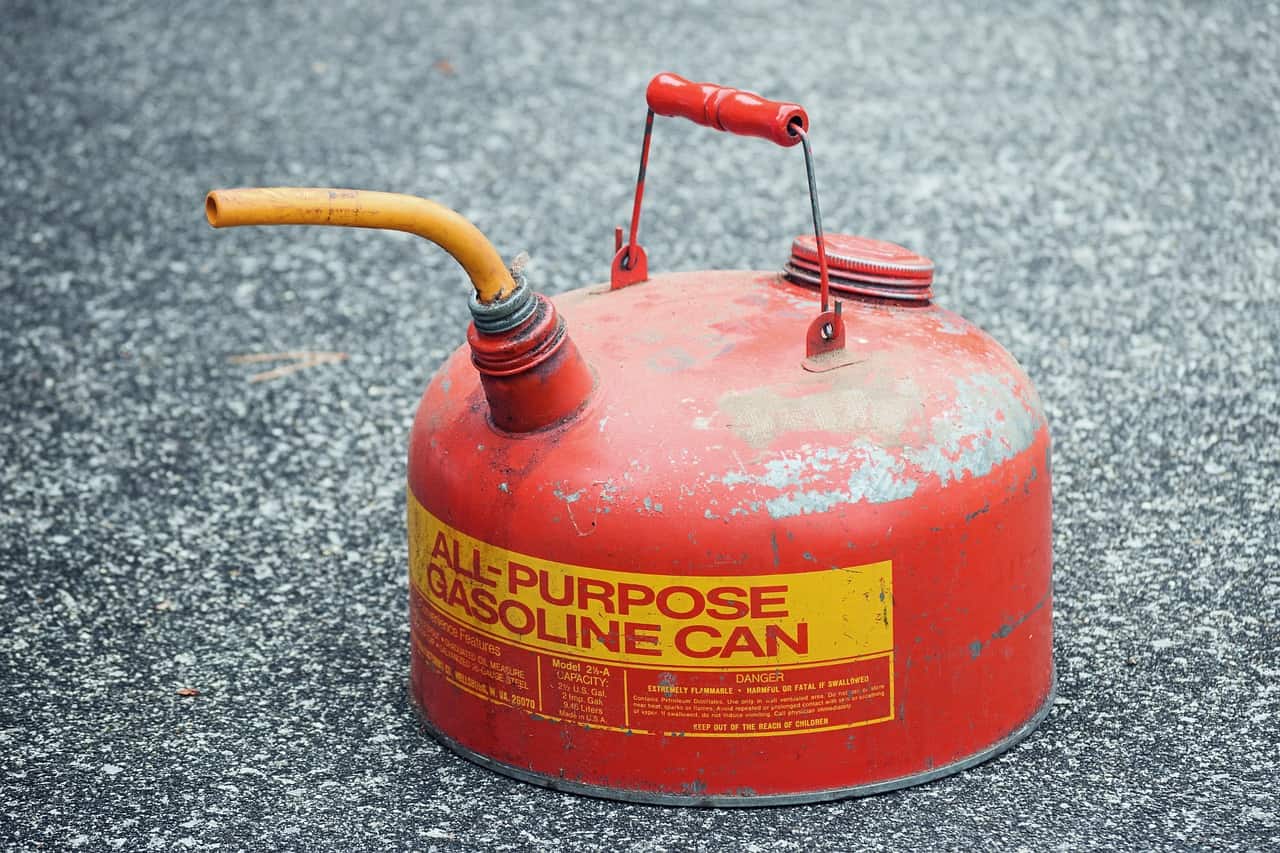
One of the more complicated aspects of being prepared for a natural (or unnatural) disaster is the storage of gasoline, but it is also one of the most important. You need gasoline for your car, but you’ll need it to run your lawn, garden equipment, and generator. Freezing can help keep most things from going bad, so you might be wondering if the same is true of gasoline.
But can you freeze gasoline and use it later? Freezing is not a practical solution for long term storage of gasoline. To freeze gasoline, you would need temperatures below -50 F or more depending on the fuel’s octane level and what additives it contains. Most consumer freezers only reach 0 F. If you managed to freeze gasoline, it will most likely still be good to use after thawing.
Having access to gasoline is clearly a crucial aspect of preparing your home for the unexpected. If you can’t run your generator, you might not be able to run your well pump, heating, or refrigerators. All very important to surviving any situation. In this article, we will discuss why freezing is not the best way to store gasoline and give you options for storing gasoline so that it doesn’t go bad.
Why is It Impractical to Freeze Gasoline?
While you can theoretically freeze gasoline and use it later, it is not a practical solution for fuel storage, especially in large quantities. Let’s take a look at three reasons you should avoid using this storage method.
Gasoline Requires Extremely Low Temperatures to Freeze
At what temperature does gasoline freeze? It depends on:
- The type of gasoline
- The octane level
- What additives have been put into it
Some claim you need temperatures lower than -50 F, while others say it can take temperatures closer to -100 F. This super low freezing point is a good thing in most situations because it means your gas doesn’t freeze your gas lines when you go to start your car on a cold winter morning.
Either way, the freezer chest in your garage ain’t gonna cut it.
Consumer freezers, even freezers meant for deep freezing, do not reach low enough temperatures to freeze gasoline. They typically only get around -40 F when on the coldest setting.
So, you would need a highly specialized freezer usually used in labs. These freezers tend to be small, so you won’t be able to store a large quantity of frozen gasoline in them. Not to mention, they cost a pretty penny.
Don’t hate the gas for it.
Frozen Gasoline Can Still Ignite
Believe it or not, gasoline will still catch fire even if it is frozen. To see the proof in action, check out this video by The King of Random. In the video, he does something extremely unsafe so that you don’t have to. He freezes gasoline using liquid nitrogen and then sets fire to it.
So, just because the gasoline is frozen doesn’t mean you don’t need to be careful with it. You would need to take special precautions to store it in a location outside of your home.
No Guarantees the Gas Will Still be Usable
While most people agree that thawed gasoline should still work, there is no research to support this theory. Considering how vastly different gasoline can be from gas station to gas station and region to region, it is difficult to predict just how freezing and thawing will impact it. It might still work, but it might not work as well.
It is also important to note that the gas you put in your car can change depending on the season. Summertime gas tends to fair better in warmer temperatures and evaporate less, while winter gas is made to handle colder temperatures. So, even if you fill up at the same exact station every time, your gas could have different additives.
How to Store Gasoline for Future Use
Unfortunately, there is no easy way to store gasoline long term. Let’s take a look at the things that make longterm gasoline storage complicated.
- Gasoline is highly flammable and puts off flammable vapors, meaning it is risky to store large quantities on your property.
- Gasoline can go bad when exposed to air. How rapidly it goes bad will depend on the type of gas.
- It must be stored outside your home and at a distance, but it should also be somewhat sheltered.
- Some municipalities do not allow permanently installed gasoline tanks and may also restrict the size of portable gasoline tanks.
- You might have trouble finding affordable homeowner’s insurance depending on how much gas you want on hand.
- It should not be stored in a location where it gets very hot.
- Some areas have limits on how much gasoline you can transport in your vehicle at one time.
- A leaky tank or gas container can be an environmental hazard.
Gasoline Storage Methods
Despite these challenges, having a supply of gasoline handy is important for anyone looking to prepare for a natural disaster.
The Rotation Method
This is the easiest and most common method used by people trying to keep a decent supply of gasoline on hand. Here’s how it works:
- Fill up several high-quality metal containers meant for storing gas. Those red plastic containers are not ideal for longterm storage.
- Store the containers on your property away from the main living space. An uninhabited barn or shed can be used for this. Try to keep them in a cool location and out of harm’s way.
- Use the gas regularly to fill up your equipment and even your car and fill up the containers as they become empty. This ensures that your gas is always fresh.
You can use the rotation method in conjunction with and of the other methods listed below. If you don’t use the rotation method, you’ll still need to make sure you use up the gas you have in a timely fashion.
Non-Permanent Storage Containers
You could also store gas in a portable gas tank or in these metal storage containers for 1-2 years without the gas degrading. Just make sure the containers are the best money can buy, and you have the lids on tight, and the gas should be fine.
The same rules apply for storage as with the rotation method. The only difference is that you’ll only need to fill up your tanks one a year.
Pro tip: Keep a tag on each container of gas with the date that you filled it up so that you know when you need to replace the gas inside.
Permanent Tanks
If you use a lot of gas or want to have a large quantity on hand, you can invest in installing a permanent gas tank on your property.
This will require some extra work and money to set up, and you’ll need to check in with your local authorities about restrictions. Still, it is a good solution for anyone who uses a lot of gas like those who have working farms or run an extensive landscaping business.
Final Thoughts
Even though freezing your gas isn’t the most practical idea, there are some simple ways to store gas on your property in moderate quantities. Most people store enough to fill their tank in small metal storage containers, which sees them through the hard times.
But something a lot of people might not consider is moving away from your dependence on gasoline. Sure, some things might require gasoline like it or not, but alternative energy options are becoming cheaper and easier to find. The less you need to depend on gasoline for storage, the less gas you’ll need to have on hand.

